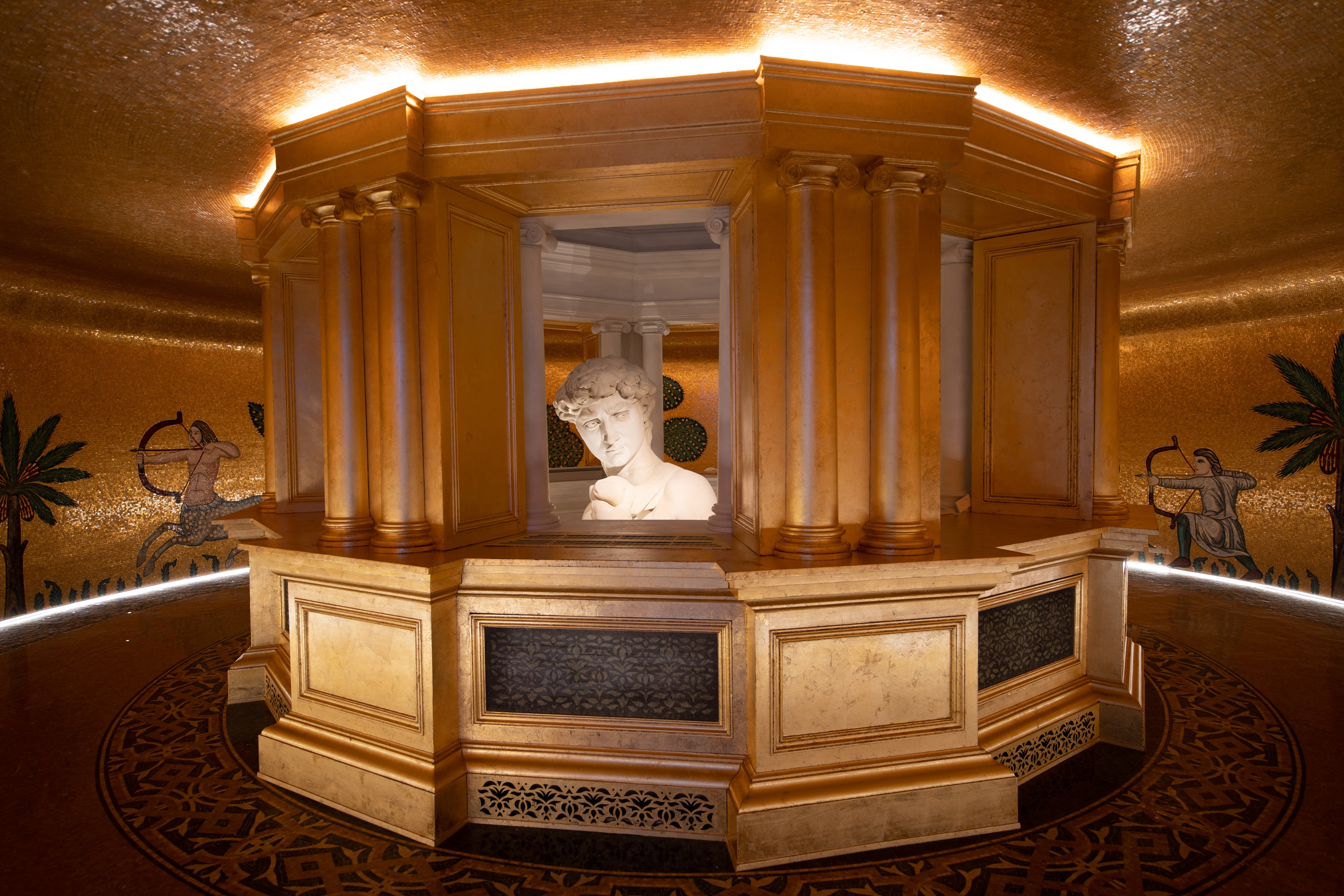
A 3D-printed copy of Michelangelo’s David is at the nexus of controversy in Dubai, where exhibitors have obscured the figure’s genitals for fear that it might offend Islamic traditionalists.
The 17-foot-tall sculpture, thought to be the most accurate facsimile of the Renaissance masterpiece ever made, spans two stories of a rotunda in the Italian pavilion at Expo 2020, which opened October 1 in the Dubai South district. Visitors can glimpse David’s top quarter, shoulders to head, from the upper floor, but his lower half, encased in glass, can only be viewed from the first floor—an area closed to the public. A concrete slab, meanwhile, effectively obscures the figure’s pelvic region.
Davide Rampello, the pavilion’s artistic director, refused to call the gesture censorship, saying instead that the goal was to position the statue as a witness to the “theater of memory,” according to Corriere della Sera. It has to do with the pavilion’s curatorial conceit, a reflection on how our collective memories are being displaced by our increasing reliance on technology.
A view from the Italian pavilion of Expo 2020, with the bottom half of the David replica. © Massimo Sestini.
“Michelangelo knew that without memory there can be neither science nor art,” Rampello told the paper. “Without memory, man loses the ability to tell the world. Here, this is a copy of the David to testify to that memory.”
“There have been no government censorships,” he added. “This staging is reproduced here as it might have been in Japan or Germany or anywhere else in the world.”
But others who worked on the project have been more candid about the practical concerns of exhibiting a naked statue in a heavily Islamic region such as the United Arab Emirates.
“We even thought of putting underwear on the statue, or changing it altogether,” an exhibition staff member, speaking on the condition of anonymity, told Italian newspaper La Repubblica. “We understood too late that it was an error to bring a statue of a nude man to the Emirates.”
When reached for comment, representatives for the Italian pavilion explained that the display of the David duplicate is “functional, to allow visitors looking at the statue from the first floor of the Pavilion to see [it] at eye level.” That, Rampello explained, “is a totally different and more introspective perspective than the one tourists in Florence are used to enjoying when visiting the original.”
Regardless of the intention, the move has sparked hot takes aplenty online. Italian art historian Vittorio Sgarbi, for one, called the pavilion organizers’ “deference to the Islamic tradition” an “unprecedented, unacceptable, intolerable humiliation.”
The pavilion is part of Expo 2020, an international fair featuring dedicated presentations from more than 100 countries and organizations. Delayed by a year due to the pandemic, it is the first World Expo edition to be held in the Middle East, Africa, and South Asia region and remains on view through March 31, 2022. The replica of David was constructed from acrylic resin based on 3D scans of Michelangelo’s masterpiece, carved between 1501 and 1504 and now permanently on view in Florence’s Galleria dell’Accademia.